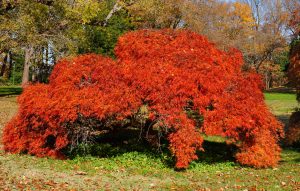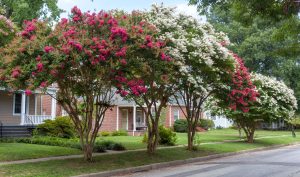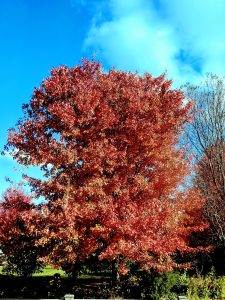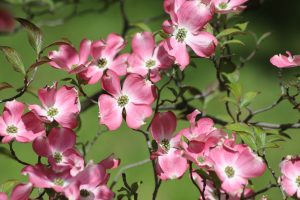Canberra is famous for its stunning autumn colours — from deep reds and vibrant oranges to soft yellows — and it’s no coincidence. Our cool-climate conditions and well-planned tree plantings in public spaces mean that every year, residents enjoy a spectacular seasonal display.
If you’d like to recreate that same autumn colour at home, especially in a smaller garden, planting the right deciduous trees is key. Not only do these trees put on a colourful show in autumn, but they also let the sunlight in over winter, provide shade in summer, and many offer beautiful spring flowers.
Here are some of the best cold-climate deciduous trees suited to smaller Canberra gardens
1. Japanese Maple (Acer palmatum)
- Autumn colour: Fiery red, orange, and burgundy
- Spring/summer: Delicate green or purple foliage; dappled shade
- Size: Usually 2–5 metres
- Notes: Prefers a protected spot with some shade and shelter from wind
2. Crepe Myrtle (Lagerstroemia indica)
- Autumn colour: Orange, red, and yellow
- Spring/summer: Long-lasting pink, white, or purple flowers
- Size: 3–6 metres
- Notes: Excellent in full sun; drought-tolerant once established
3. Claret Ash (Fraxinus angustifolia ‘Raywood’)
- Autumn colour: Deep claret to crimson
- Spring/summer: Lush green foliage
- Size: 6–10 metres, but slow-growing and manageable when young
- Notes: Provides great summer shade; give it space to grow
4. Ornamental Pear (Pyrus calleryana ‘Capital’)
- Autumn colour: Bright red to purple
- Spring: Masses of white flowers
- Size: 5–8 metres tall, narrow habit (great for small spaces)
- Notes: Hardy, low-maintenance, and adaptable to most soils
5. Flowering Dogwood (Cornus florida)
- Autumn colour: Rich red to burgundy foliage
- Spring: Stunning white or pink flower bracts before the leaves emerge
- Size: 4–6 metres
- Notes: Prefers well-drained, slightly acidic soil and a semi-shaded to full sun position; offers year-round interest with flowers, foliage, and attractive branching
Why Choose Deciduous Trees?
Deciduous trees are ideal for Canberra gardens. They:
- Provide shade in summer
- Let in light and warmth in winter
- Offer seasonal interest with spring flowers and autumn foliage
- Help manage garden microclimates more effectively
Planting Tips
- Autumn and early winter are good times to plant when it’s not too hot .
- Choose a sunny to semi-shaded spot, depending on the species.
- Water young trees regularly until established.
- Mulch well to protect roots from temperature extremes.





